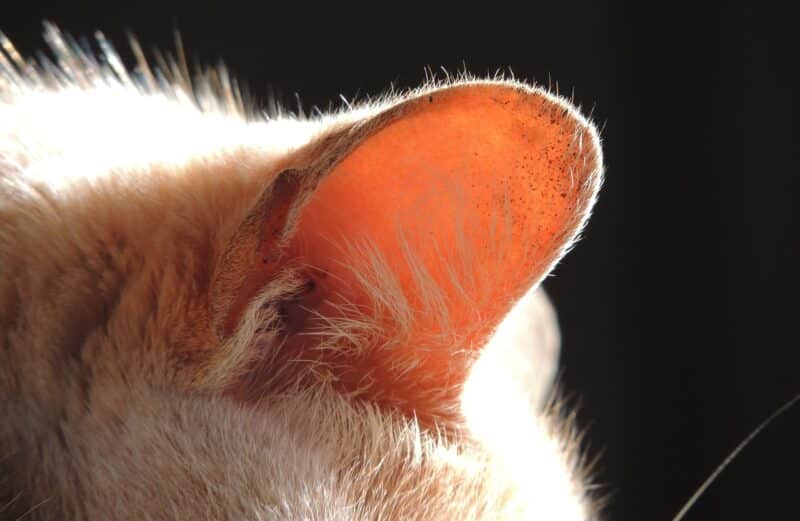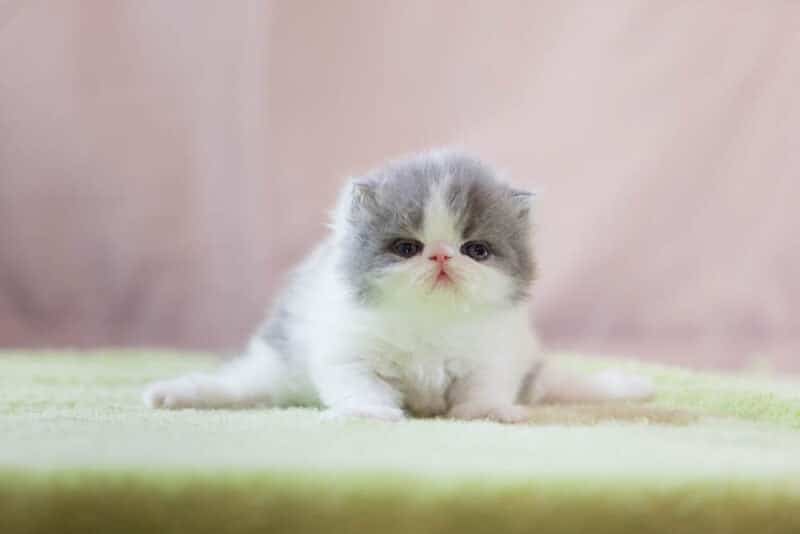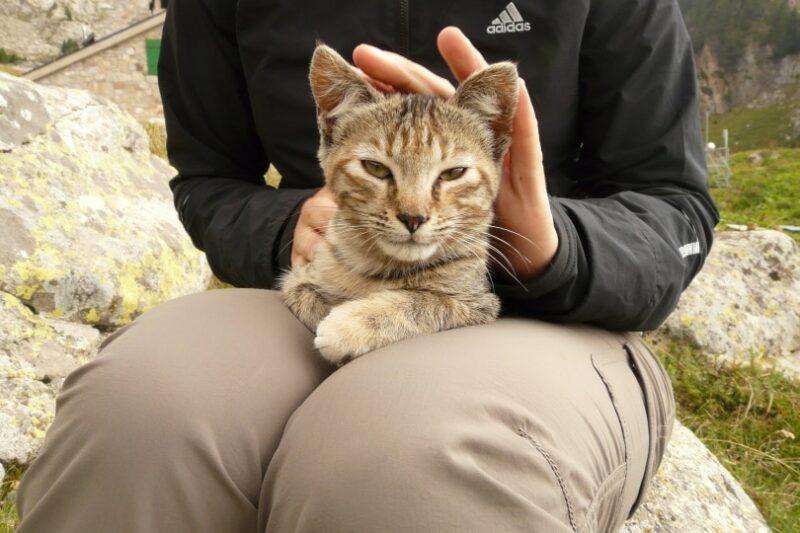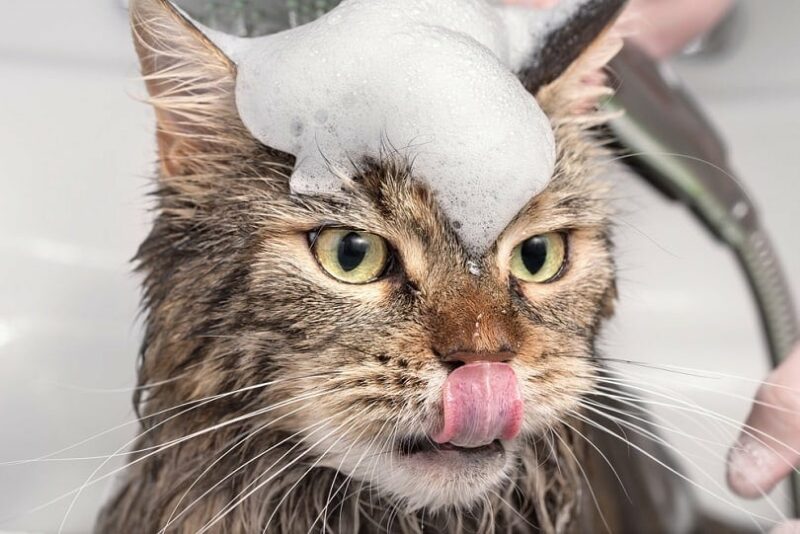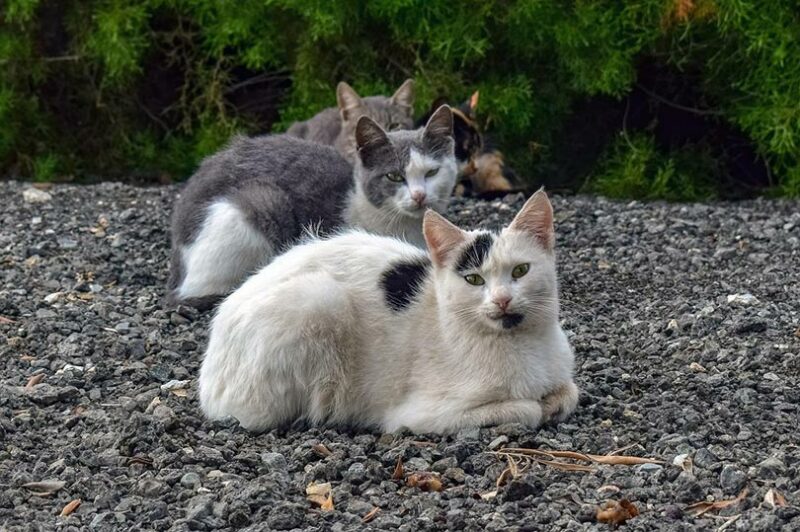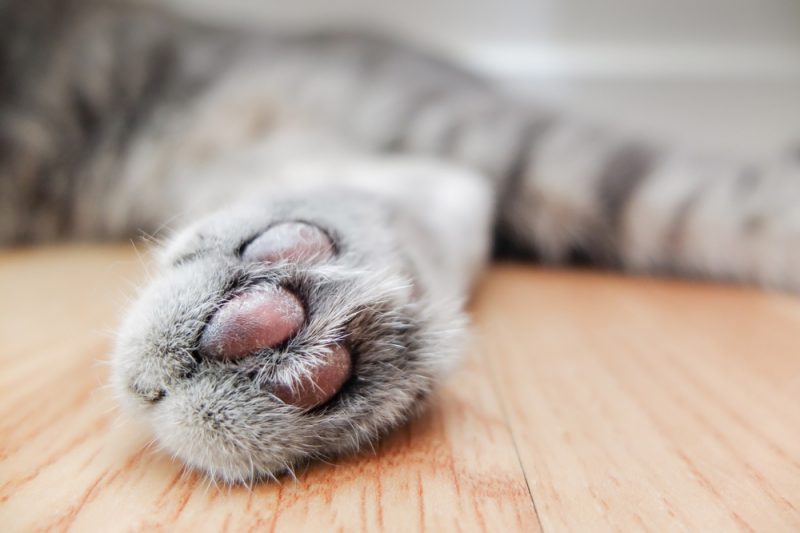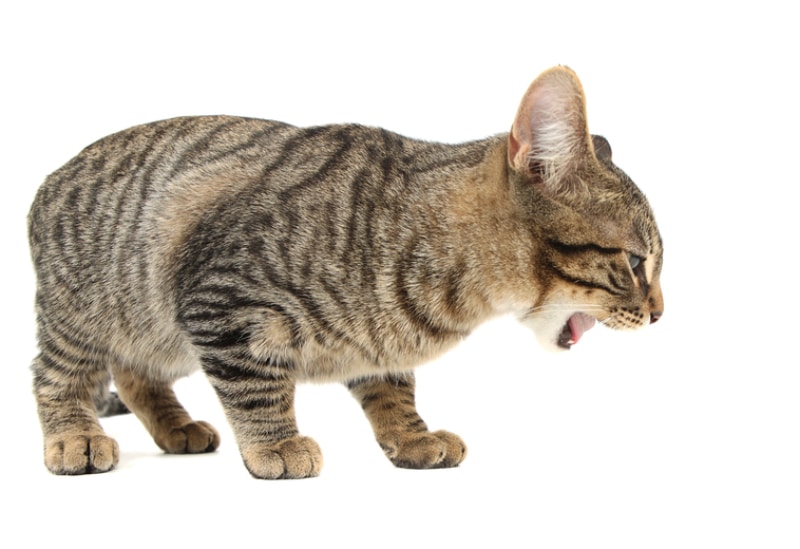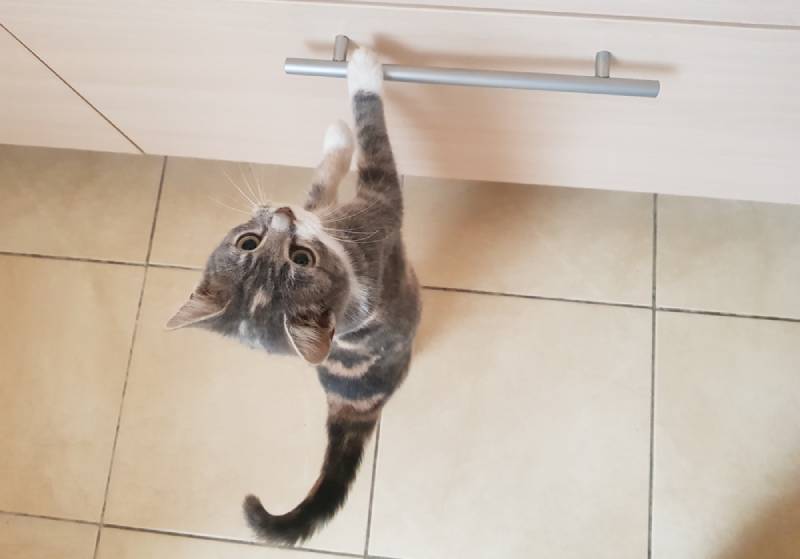We all know cats are cute and snuggly. Well, at least most of them. They even have fuzzy ears. But what’s up with that cute fuzz inside your cat’s ear? Does it have a purpose? Or is it just extra hair? As it turns out, that fluffy bit of fur inside your kitty’s ears is sometimes anecdotally referred to as ear furnishing, although it does not have a particular name, and it serves a much greater purpose than just making your cat look cute. Some cats may also have ear tufts on the tips of their ears. Let’s find out more!

Types of Fuzz in Cat’s Ears
Cats can have two different kinds of fur in their ears. The first is an ear tuft. These are sometimes called “lynx tips” and are the fur that grows at the very tips of cat ears. Not all cats have ear tufts, and we don’t really know what their purpose is, if any. Some believe it may serve to enhance their hearing, help detect objects directly above their head, or trap debris from going down the ear canal. At this time, we cannot be certain of the exact causes and are left to only speculate.
Cat ear furnishings are the hairs that are found on the inside of a cat’s ear base, at the entrance of the external ear canal. The purpose may be to help cats pick up tiny sound vibrations from sounds that are quiet or far away. Ear furnishings may be a part of why cats have such good hearing, but there is no evidence based scientific research to confirm this. Most domestic cats have some form of ear furnishing, regardless of their breed. These hairs may also help to trap dirt and ear wax so that the ear canal stays as clean as possible.

Cat Ear Anatomy
The basic structure of a cat’s ear is the same as that of most mammals. They have three structural areas: the outer ear, middle ear, and inner ear. The outer ear consists of the pinna, the part you see, and the external ear canal. Cats have mobile pinna, meaning they can turn their ears in different directions to catch the sound. They can also move each ear independently of the other.
The middle ear is made up of the eardrum and tiny bones called ossicles. These bones vibrate and transmit sound waves to the inner ear. Sensory cells in the inner ear convert the vibrations to electrical impulses and send messages to the brain through the auditory nerve.
The inner ear serves a dual purpose. It contains cells for receiving sound waves, but it is also part of the vestibular systems, which provide balance and spatial orientation. Your cat’s ears tell them where their body is relative to the world around them, allowing them to balance and jump effectively.
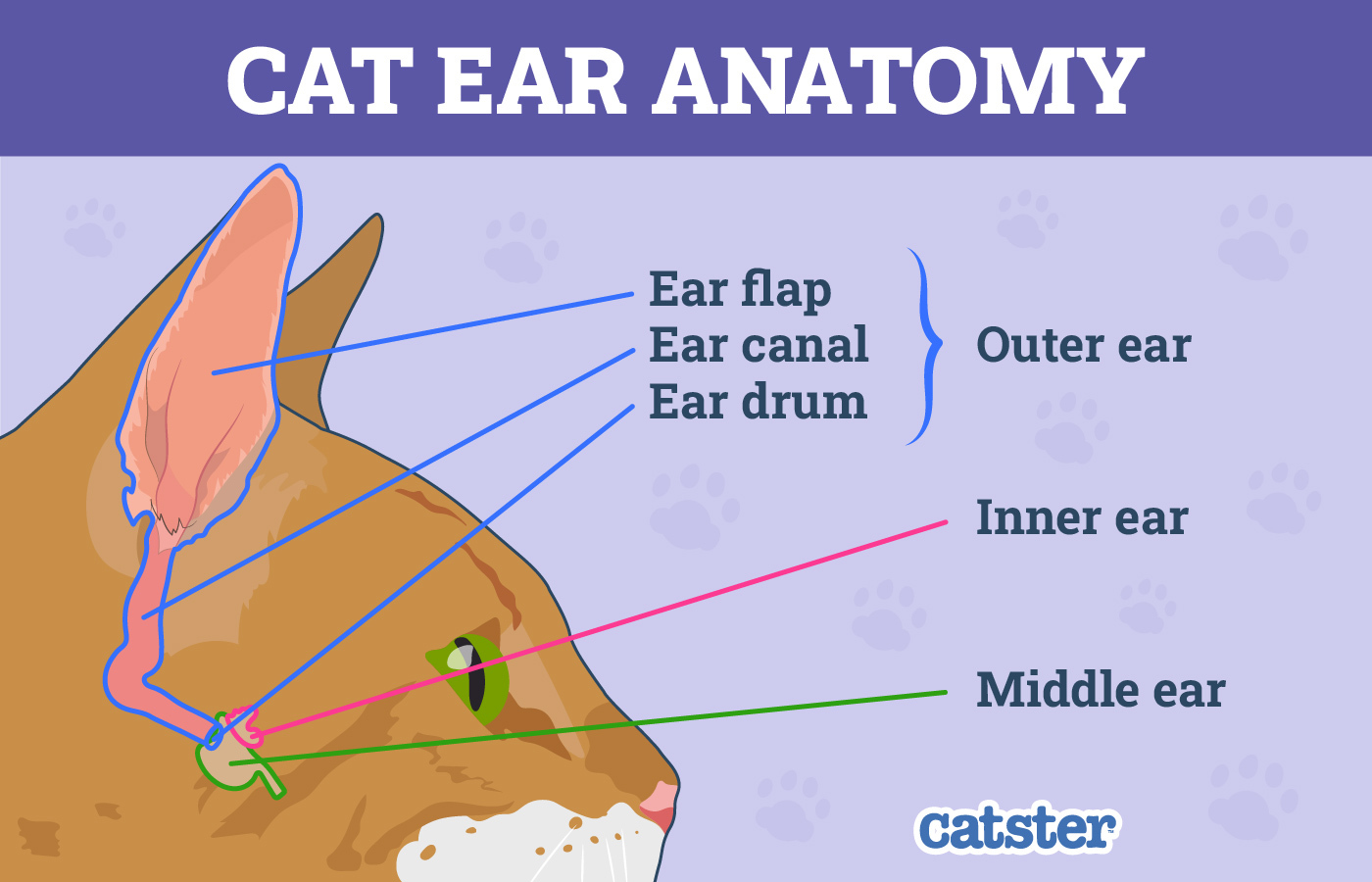
Interesting Facts About Cat Ears
Now that you know what the cute fuzz inside your cat’s ears is, you might be curious to know some other fun facts about cat ears.
- Cats rarely suffer from ear infections in comparison to dogs.
- Ear mites are one of the most common causes for ear inflammation or otitis externa in cats.
- The folds of skin that form “slits” on the outside of the cat’s ear toward the skull are called Henry’s pockets. Vets and scientists aren’t sure what the purpose of Henry’s pockets is or if they serve any purpose at all.
- Cats hear lower and higher frequencies than both people and dogs.
- White cats with blue eyes have a higher incidence of deafness than cats of any other color.
- Very rarely, cats may have a genetic mutation that gives them four ears, with smaller rudimental and not fully developed extra pinnae usually in front of the main two.
- The ear canals of cats are fairly efficient at self-cleaning unless there is an infection, a polyp, or another issue.
- Cats are born with their ears closed and they cannot hear. They are an altricial species, meaning they are incapable of looking after themselves and rely solely on their mother to survive. Their ear canals are sealed at birth and don’t open until about 10–14 days of age.
- The temperature of your cat’s ears may be able to tell you if they are stressed. One study showed that the right tympanic ear temperature changed according to serum cortisol levels, but more evidence-based research is needed to look into this finding.
- There are 32 different muscles that move your cat’s ears.
- A cat’s ears and ear position indicate a wide variety of emotions, from happiness to relaxation to aggression.

Final Thoughts
It turns out that the cute fuzz inside your cat’s ears may be there to help funnel sound into the ear canal, but this isn’t yet established. However, more importantly, this ear furnishing is part of your cat’s self-cleaning mechanism for their ears. While some cat breeds have more prominent ear furnishings than others, most domestic breeds have them in some form.
Cats’ ears are finely tuned systems that give them some of the best hearing of any mammal species. Hopefully, you now have a better understanding of how they work and what makes them special.
Featured Image by: TRAPHITHO, Pixabay
